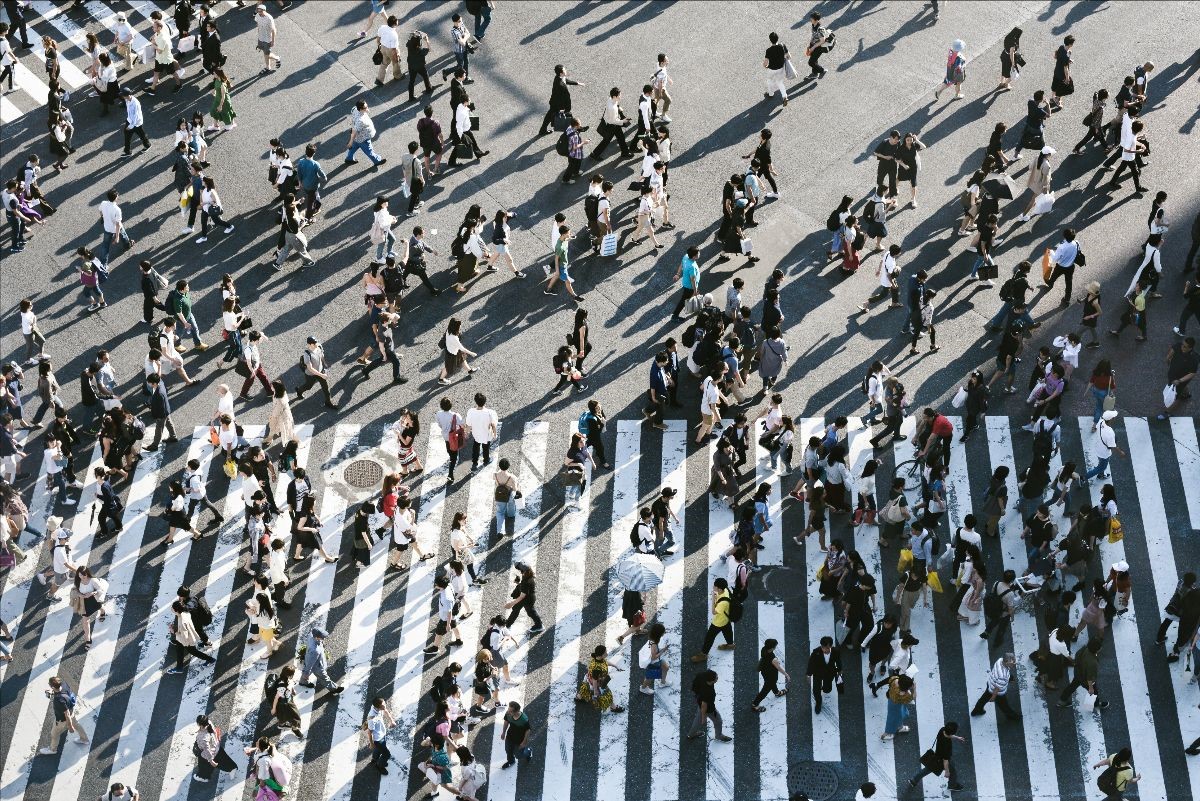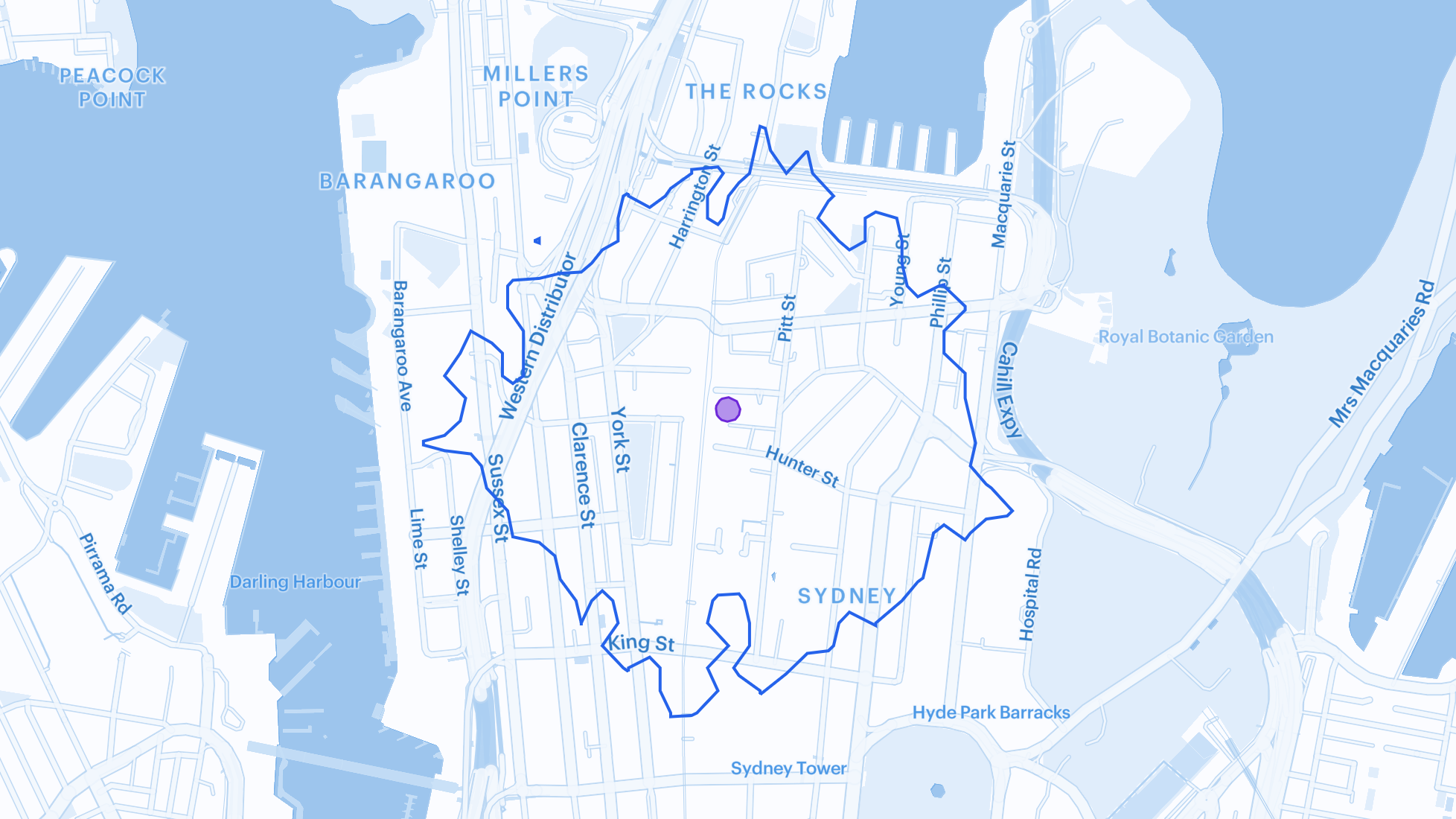
7 Minute Walk
Recently we caught up with Callan Cameron, Director, and Founder at Propella.ai. We love their human centric approach to data, such as determining that the typical retail catchment area for a CBD building is roughly a 7-minute walk in any direction. It’s called an “isochrone’, which is a line on a map that represents points of equal travel time from a specific starting point.
Using de-identified human movement (mobile) data, Propella.ai carried out an analysis of office worker movement in and around CBD environments in Australia and determined that this 7 minute walking isochrone represents the likely maximum distance that workers will commonly walk from their office for most of their daily needs such as lunch, convenience items and personal services.
This is because the density of mobile device events (“pings”) for the workers outside of their office building tends to drop away significantly beyond the 7-minute isochrone area.
The average person on an average day during work hours walks approx. 5 kms per hour. Let’s say 7 mintues is approximately 600 metres.
Naturally the shape, size, and topography of our main capital cities means there are minor differences. Sydney is compact and hilly whereas Melbourne is spread out. Perth is elongated. Brisbane is a “triangle”. Adelaide and Canberra are smaller and flat but with lower density (height) office buildings.
Here is an example of a 7-minute isochrone from Australia Square in Sydney.

Understanding the 7-minute catchment area surrounding an office building can inform strategic decisions for office building occupiers and owners. For example, through analysis of office buildings in Sydney and Melbourne, Propella.ai has proven that office buildings with higher Retail Scores are attracting workers back to the office more than office buildings with lower Retail Scores.
What’s within your 7-minute walk?

No Comments